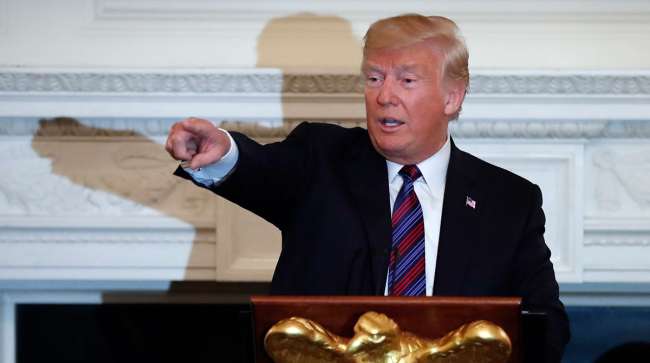Trump in No Hurry to Resume Tariff Talks With China

The Trump administration is putting trade negotiations with China on the back burner while focusing first on resolving issues in the North American hemisphere, reaching a breakthrough agreement between the United States and Mexico.
The White House believes it’s important to resolve trade disputes in “our own neighborhood” quickly and favorably, U.S. Commerce Secretary Wilbur Ross told Fox Business News on Aug. 28. Ross said President Donald Trump’s position is that, currently, it’s not the best time for negotiations with China, denting expectations of a fast resolution.
National Economic Council Director Larry Kudlow called the pact with Mexico “a very growthy trade deal” in an interview Aug. 28 with Fox News, adding that it holds lessons for Chinese negotiators. “What I’ll say about China, finally, wrap up: Our deal with Mexico shows that free trade, fair trade can be done,” he said. “That a pro-growth trade deal can be made.”
Speaking to reporters during his announcement Aug. 27 of the new Mexico accord, Trump said he is rejecting overtures from China to negotiate as he tries to achieve a less “one-sided” trade policy. “They want to talk,” Trump said. But “it’s just not the right time to talk right now, to be honest.”
Trump’s remarks are his latest in recent weeks to suggest he doesn’t see a quick end to trade tensions with China, stoking concerns in Beijing that his actions are part of a wider plan to contain the nation’s rise. Fears are growing that the spat between the world’s biggest economies may spill over into geopolitical flash points, from North Korea to Taiwan.
Negotiations between the United States and China have been stalled since May, when Trump put a stop to a deal for China to buy more energy and agricultural goods to narrow the trade deficit. After midlevel trade talks in Washington the week of Aug. 20 ended with no agreement, a person familiar with the discussions said that Chinese officials had raised the prospect of suspending talks until after U.S. congressional elections in November.
The United States and Mexico agreed to replace the North American Free Trade Agreement and Trump called on Canada to join the deal soon or risk being left out. While share prices for South Korean and Japanese automakers gained amid expectations of reduced tariff risk, Mexico’s peso weakened 0.4% against the dollar in Asian trading Aug. 28, paring about half its Aug. 27 climb.
The Mexico breakthrough will embolden Trump’s trade hawks to double down on demands for concessions from China, according Rob Carnell and Prakash Sakpal, economists at ING Bank NV in Singapore.
“So as far as China and Asia are concerned, this new Mexico deal solves nothing,” they wrote in a note. “It strengthens the U.S. position to play hard-ball with China. This doesn’t look good for the region.”
Because the nature of the dispute between China and the United States is more complex, officials in Beijing are likely of the view that it be much tougher to resolve, Amy Celico, principal of Albright Stonebridge Group and previously senior director for China affairs at the Office of the U.S. Trade Representative, told Bloomberg Television.
“For U.S.-China trade, it is going to be much more difficult to come to a short-term resolution, particularly if we sit back for a minute and look at some of the rhetoric coming out of this administration,” Celico said. “The hawks are certainly in the ascendancy on China trade policy.”
Meetings between Chinese and U.S. officials in Washington the week of Aug. 20 made little headway, setting the stage for the United States to push ahead with the next round of tariffs on up to $200 billion worth of Chinese goods. Beijing has said it would retaliate.
The two days of talks led by U.S. Treasury Undersecretary for International Affairs David Malpass and Vice Commerce Minister Wang Shouwen marked the first major interaction between the sides since June.
Trump wants to shrink a $375 billion goods deficit with China and Beijing to unwind industrial subsidies and scale back its “Made in China 2025” plan to lead the world in industries such as artificial intelligence and robotics. So far, there’s been little indication of compromise.
Still, Trump did hold the door open for an eventual resolution with China.
“It’s been too one-sided for too many years, for too many decades and so it’s not the right time to talk,” he says, “But, eventually, I’m sure that we’ll be able to work out a deal with China.”
With assistance by Lilian Karunungan and Jennifer Epstein.




